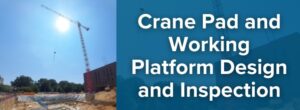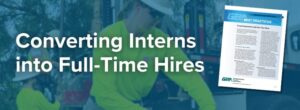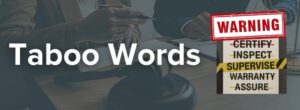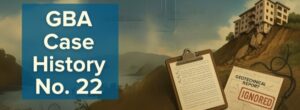The 10 Most-Used Tools in the GBA Library
GBA offers a robust library of resources to elevate your practice, reduce liability, and support business growth. You can search our extensive resource library by keyword (try it now) or sort through categories by publication type. All the downloadable publications are free to GBA members; many are available for purchase by non-members.
Find out what your peers have found most useful with this curated lists of the 10 most downloaded resources from the GBA library and separately, the 10 most downloaded Case Histories. These resources – both new releases and timeless favorites – reflect the diversity of challenges and opportunities geoprofessionals encounter.
1. Crane Pad and Working Platform Design and Inspection
GBA’s most-downloaded resource of the year to-date, this Best Practices document delivers a clear, consultant-focused framework for managing geotechnical risk in the design and inspection of crane pads and other working platforms. It empowers geoprofessional consultants to elevate their practice by showcasing how thoughtful site assessment, load distribution strategies, and constructability planning can reduce uncertainty, improve safety, and strengthen client trust.
2. Proposed Best Practices for Engineer of Record (EOR) for Tailings Dams
Developed by GBA’s Tailings Engineer of Record Task Force, this document (and two related resources) provides a comprehensive framework for defining the Engineer of Record (EoR) role in tailings dam projects. The guidance provides geoprofessional consultants with the tools to lead confidently across the full project lifecycle—enhancing dam safety, regulatory compliance, and stakeholder trust.
3. Navigating New Horizons: Beyond gINT – A New Era in Geotechnical Data
As gINT approaches end-of-support in 2026, this GBA Business Brief provides a vendor-neutral overview of emerging geotechnical data management tools. Compiled by the GBA Business Technology Committee, it enables firms to make informed, risk-aware decisions about transitioning to next-generation borehole logging and data integration platforms.
4. Converting Interns into Full-Time Hires
This Best Practices guide offers geoprofessional employers a proven framework for converting interns into high-performing full-time employees. Packed with actionable strategies—from onboarding and mentorship to project planning and post-internship follow-up—it helps firms strengthen their talent pipeline, reinforce company culture, and build long-term staff loyalty.
5. Guide to the In-House Review of Geoprofessional Reports
This guide equips geoprofessional firms with a structured, firm-wide approach to reviewing technical reports—ensuring clarity, quality, and alignment with contractual, technical, and risk management standards. Designed to elevate both report writers and reviewers, it promotes mentorship, consistency, and professionalism while reducing liability through better communication and documentation practices.
6. Taboo Words
This Best Practices guide helps geoprofessionals avoid costly liability by identifying eight high-risk words—like “certify,” “inspect,” and “supervise”—that can unintentionally expand professional responsibility and erode insurance coverage. Through real-world legal examples and practical safeguards, it equips firms to communicate with greater precision and protect themselves from unintended contractual and legal exposure.
7. Mitigating Risk with the Right Geotechnical Engineer
This message to owners outlines five essential steps for reducing subsurface risk by engaging the right geotechnical engineer early and keeping them involved throughout design and construction. It emphasizes qualifications-based selection, collaborative scope development, and continuity of service—highlighting how proactive geotechnical involvement can prevent costly delays, change orders, and disputes while delivering long-term value to the project team.
8. Avoiding Absolutes
This Best Practices guide helps geoprofessionals recognize and avoid the use of absolute language—words like “all,” “never,” “ensure,” and “maximize”—that can unintentionally create legal exposure or unrealistic expectations. Through practical examples and legal context, it encourages more precise, defensible communication in technical documents, contracts, and even internal conversations, reinforcing professionalism and reducing risk.
9. AI in the Geoprofessions
This six-part GBA series demystifies artificial intelligence for geoprofessionals. From understanding hallucinations and crafting effective prompts to role-playing with digital versions of experts like Karl Terzaghi, the series empowers readers to explore AI’s potential while remaining grounded in professional judgment and risk awareness.
10. Fundamental Elements for Project Managers
This 11-module training course equips emerging project managers with essential skills in communication, budgeting, scheduling, client relations, and team leadership. The course supports both group instruction and self-paced learning, with quizzes and certificates included to reinforce comprehension and completion.
TOP 10 CASE HISTORIES
GBA Case Histories are real-world lessons drawn from actual project experiences that help geoprofessionals avoid costly mistakes. The following Top 10 Case History downloads through the first six months of 2025 include lessons learned from residential risks, communication breakdowns, and contract pitfalls.
1. Beware! A Friend’s Small Project Can Be Hazardous to Your Firm’s Health
Case History No. 1
A well-meaning preliminary study for a small residential project spiraled into a $650,000 liability claim—reminding geoprofessionals that even “simple” jobs demand rigorous communication, clear limitations, and soft-skill savvy. This case underscores GBA’s enduring axiom: Do it right or don’t do it at all.
2. Suspiciously Variable Test Results? Take a Closer Look…the Sooner the Better.
Case History No. 110
A routine construction materials engineering and testing (CoMET) assignment unraveled into arbitration after a sub-contractor quietly mixed fat clay into approved fill—jeopardizing the integrity of the building pads. This case underscores why geoprofessionals must trust their instincts, document everything, and never underestimate the risks of small, low-budget projects with fragmented oversight.
 3. If the Bus Driver Doesn’t Have a License, Get off the Bus
3. If the Bus Driver Doesn’t Have a License, Get off the Bus
Case History No. 5
A low-fee, low-scope assignment intended as a training opportunity turned into a $1.2 million lesson in why geoprofessionals must never compromise on quality—regardless of project size or budget. This cautionary tale underscores the critical importance of supervision, communication, and writing clarity in protecting your firm and your client.
4. It Can Be a Costly Dam, Shame if Clients Won’t Take Your Advice
Case History No. 10
Despite identifying nearly every risk in advance, a GBA Member Firm found itself entangled in a multi-million-dollar dispute after its recommendations were ignored in favor of shortcuts and siloed decision-making. This case is a powerful reminder that even the most professional performance can’t shield you from litigation when communication breaks down and documentation is lacking.
 5. Clients Who Don’t Follow Advice Should Be Someone Else’s Client
5. Clients Who Don’t Follow Advice Should Be Someone Else’s Client
Case History No. 2
A handshake agreement, ignored recommendations, and a slab-on-grade floor led to exactly the kind of damage a firm’s geotechnical report warned about. This case highlights the high risk of residential work, the dangers of skipping written contracts, and why “confirmation-dependent” recommendations must be clearly communicated—and respected.
 6. Compromise Must Be Part of Your Business Strategy
6. Compromise Must Be Part of Your Business Strategy
Case History No. 4
An innovative casing-removal technique promised big savings—but led to soil-contaminated shafts, costly remediation, and finger-pointing among project stakeholders. This case illustrates the hidden risks of high-stakes shortcuts and why visual observation alone isn’t enough when the margin for error is razor-thin.
7. Don’t Worry. We Don’t Plan to Be There
Case History No. 41
A $3,500 assignment ballooned into nearly $1 million in costs after casual assumptions, missing documentation, and lack of professional liability insurance collided with post-construction settlement. This case is a powerful reminder that even the smallest projects demand rigorous contracts, clear communication, and respect for risk—because courts don’t care how small the fee was.
8. Documentation Can Prevent Frivolous Lawsuits
Case History No. 22
A hillside condo project spiraled into legal threats and slope failure after critical geotechnical recommendations were ignored and communication broke down. This case underscores the importance of proactive follow-up, complete service proposals, and clear documentation—because even when you’re blameless, you’re not always off the hook.
9. Litigation for Collections…a Lose-Lose Scenario
Case History No. 13
A missed opportunity to clarify scope, communicate directly, and respond professionally led to a costly dispute, a lost client, and millions in potential future revenue gone. This case reminds geoprofessionals that technical excellence alone isn’t enough—client relationships, documentation, and diplomacy are just as critical to long-term success.
10. If Your Client Won’t Listen…Get Out Your Checkbook
Case History No. 3
A “fill-in-the-blanks contract,” ignored recommendations, and reliance on exculpatory clauses left a Member Firm exposed on a high-stakes sewage-treatment project. This case highlights the importance of clearly defining roles, documenting limitations, and never assuming others will protect your interests—especially when rock excavation is involved.





